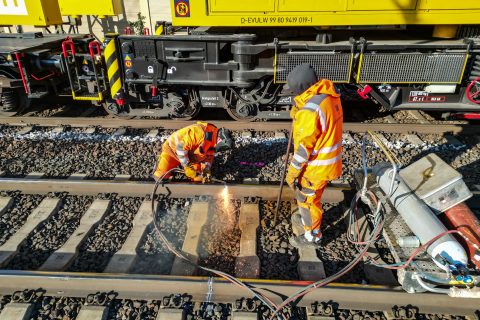‘Track rebuilding time and costs terrify me’, states Greek Deputy Transport Minister

Reconstructing the heavily damaged Greek railway network after the floods of early September is a terrifying task for the Greek Deputy Infrastructure and Transport Minister, Nikos Tahiaos, considering the time and money it will need. The Deputy Minister said that reinstating the railway network operational will be a “great adventure” given that it has sustained the most substantial damages when it comes to infrastructure.
“It is extremely difficult to just restore the damaged lines. We will need to launch a full rebuilding,” Tahiaos explained during an interview with the Greek state-owned public broadcaster ERT. He added that the funds for the railway reconstruction will be secured via the EU’s Recovery and Resilience Facility (RRF) reserves targeting investments in Greece.
However, he underlined that the sum is so big that he doesn’t want to mention it, thus not explaining how much rebuilding the main Greek north-south railway axis will cost. The latest estimation talked about at least 160 million euros, an amount which could have increased even more as more and more damages appear while flood water recedes.
Freight transport top priority
The Hellenic Railways Organisation (OSE) has deployed a two-fold plan for the network’s reconstruction. In the first phase, the national railway company aims to repair at least one of the line’s two tracks so traffic can restart with single-track, diesel traction and low-speed operations. This endeavour was estimated to take three to four weeks, but Tahiaos now said it could last up to two months. So far, the only recovery action is removing portable materials from the tracks.
This solution is essential for rail freight and Piraeus since the Greek port is completely isolated from rail services, resulting in a significant backlog already with hundreds of containers piling up. According to Tahiaos, that is also the Government’s top priority. “When the single track is available for operations, diesel trains will be able to run with 80 kph, and capacity will be reserved primarily for freight trains and secondarily for passengers,” he explained.
Also read:





